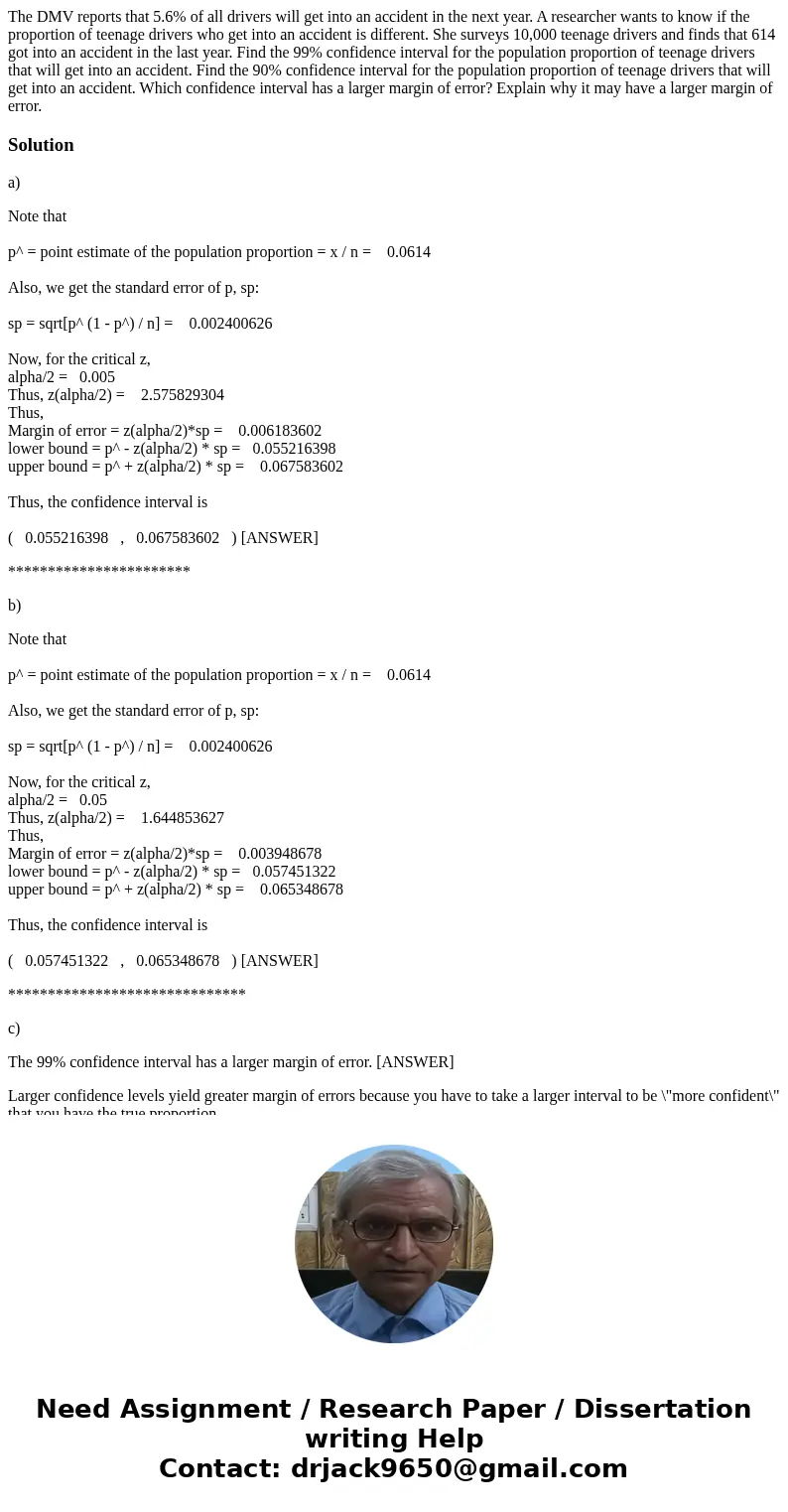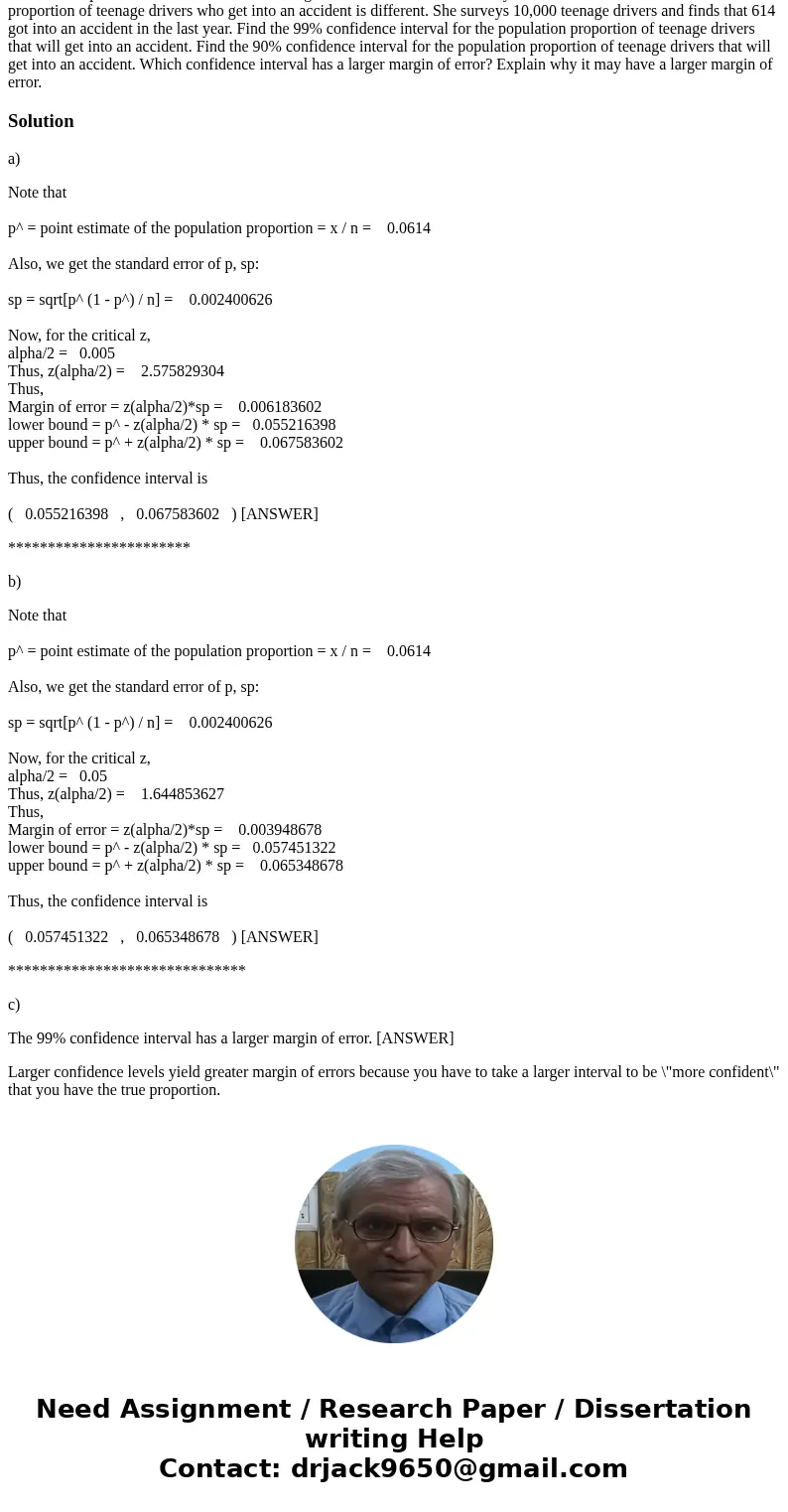The DMV reports that 56 of all drivers will get into an acci
Solution
a)
Note that
p^ = point estimate of the population proportion = x / n = 0.0614
Also, we get the standard error of p, sp:
sp = sqrt[p^ (1 - p^) / n] = 0.002400626
Now, for the critical z,
alpha/2 = 0.005
Thus, z(alpha/2) = 2.575829304
Thus,
Margin of error = z(alpha/2)*sp = 0.006183602
lower bound = p^ - z(alpha/2) * sp = 0.055216398
upper bound = p^ + z(alpha/2) * sp = 0.067583602
Thus, the confidence interval is
( 0.055216398 , 0.067583602 ) [ANSWER]
***********************
b)
Note that
p^ = point estimate of the population proportion = x / n = 0.0614
Also, we get the standard error of p, sp:
sp = sqrt[p^ (1 - p^) / n] = 0.002400626
Now, for the critical z,
alpha/2 = 0.05
Thus, z(alpha/2) = 1.644853627
Thus,
Margin of error = z(alpha/2)*sp = 0.003948678
lower bound = p^ - z(alpha/2) * sp = 0.057451322
upper bound = p^ + z(alpha/2) * sp = 0.065348678
Thus, the confidence interval is
( 0.057451322 , 0.065348678 ) [ANSWER]
******************************
c)
The 99% confidence interval has a larger margin of error. [ANSWER]
Larger confidence levels yield greater margin of errors because you have to take a larger interval to be \"more confident\" that you have the true proportion.


 Homework Sourse
Homework Sourse